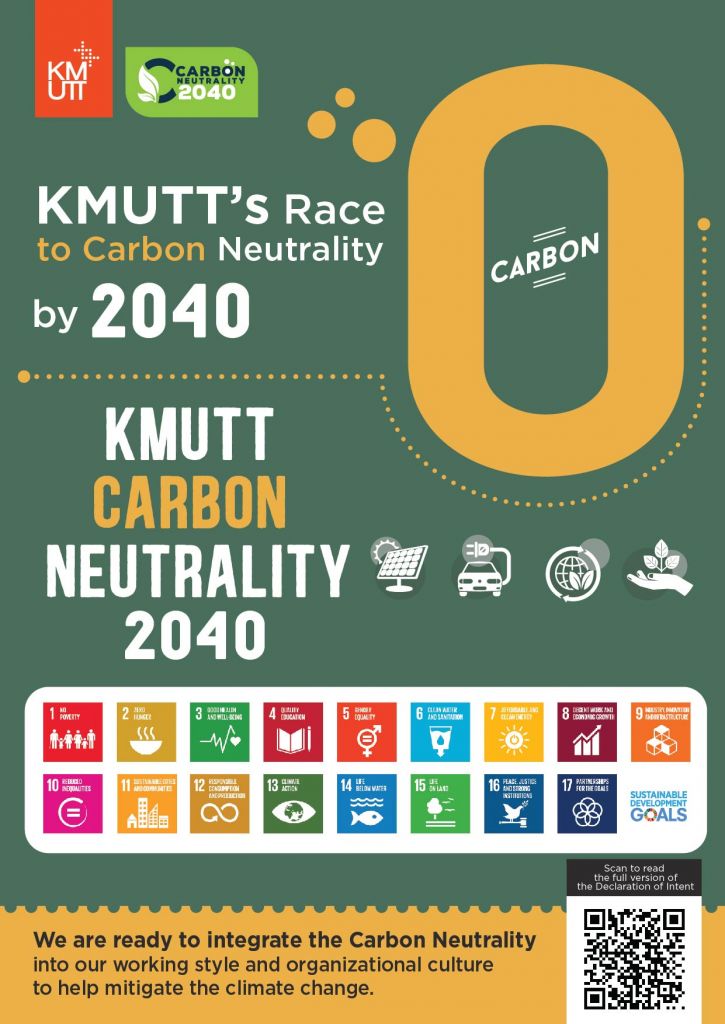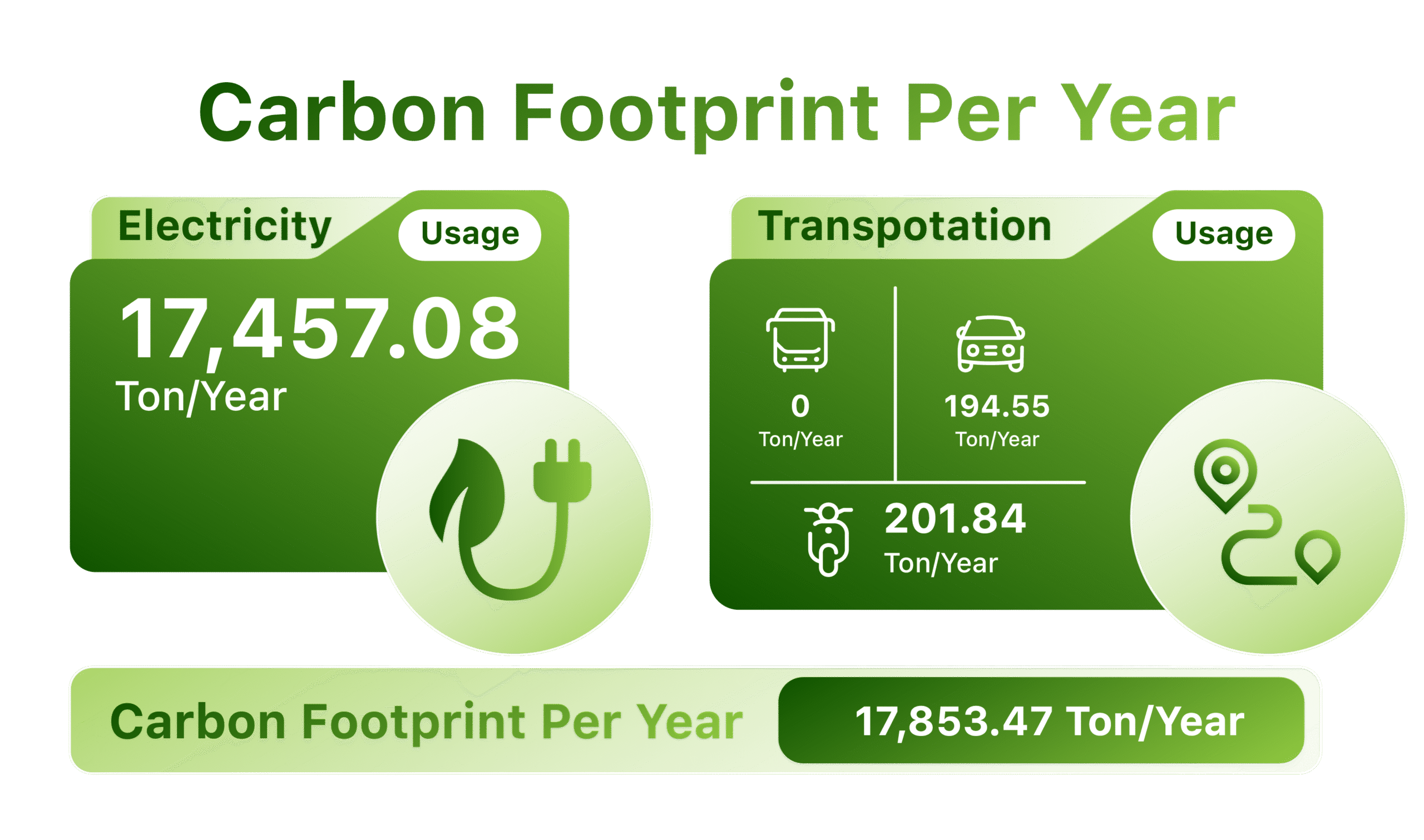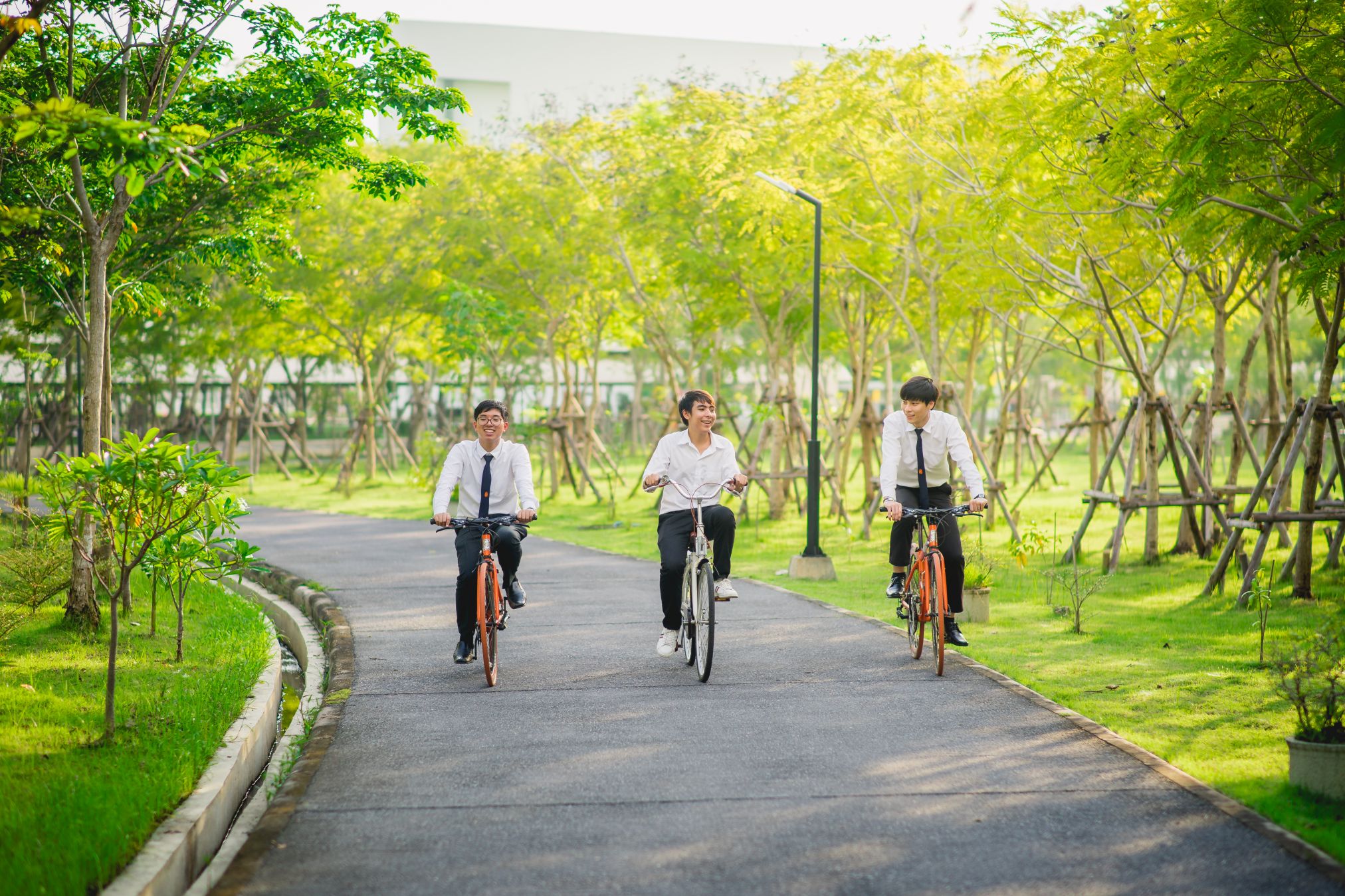Declaration of Intent
‘KMUTT’s Race to Carbon Neutrality by 2040’



Carbon Footprint

At King Mongkut’s University of Technology Thonburi (KMUTT), our researchers are equipped with extensive resources that enable them to pursue impactful studies on carbon footprint and greenhouse gas (GHG) emissions. The School of Energy, Environment and Materials and the Joint Graduate School of Energy and Environment (JGSEE) serve as the university’s key academic hubs dedicated to advancing research in climate change and environmental sustainability.
One example is the study on “Greenhouse Gas Emissions from Low-Income House Construction in Thailand,” which applies the Life Cycle Assessment (LCA) methodology to evaluate carbon emissions generated during the construction process.
To measure emissions from university activities, KMUTT employs tools such as the Carbon Footprint Calculator (SimaPro) and follows international and national standards including the Intergovernmental Panel on Climate Change (IPCC) and the Thailand Greenhouse Gas Management Organization (TGO) guidelines. The assessment covers both Scope 1–3 emissions, with primary sources coming from electricity consumption (Gate-to-Gate) and transportation activities, including university shuttle buses, EV buses, private cars, and motorcycles.
Commitment to Environmental Leadership
KMUTT is deeply committed to environmental responsibility across all aspects of its operations—teaching, research, and campus management. The university strives to serve as a model Green University, promoting best practices in Energy, Environment, and Safety Management Systems (EESH). Through these efforts, KMUTT empowers students, staff, and partners to become change agents, working collectively toward a more sustainable and resilient society.
Continuous improvement remains at the heart of KMUTT’s sustainability journey, reinforcing our dedication to reducing environmental impact and achieving long-term sustainability.
Our Low-Carbon Vision
“Over the next decade, KMUTT aims to become a world-leading university that cultivates future global leaders in technology—individuals who understand the principles of sustainable development and recognize the importance of reducing carbon dioxide and other greenhouse gas emissions.”
Carbon Footprint and Scope 3 Emissions
The university’s Scope 3 emissions are calculated from the following key indicators:
- Annual electricity consumption
- Annual transportation activities (buses, cars, motorcycles)
- Open-space area per capita
As of 2025, KMUTT’s total carbon footprint is recorded at 17,853.47 tons of CO₂ equivalent per year.




